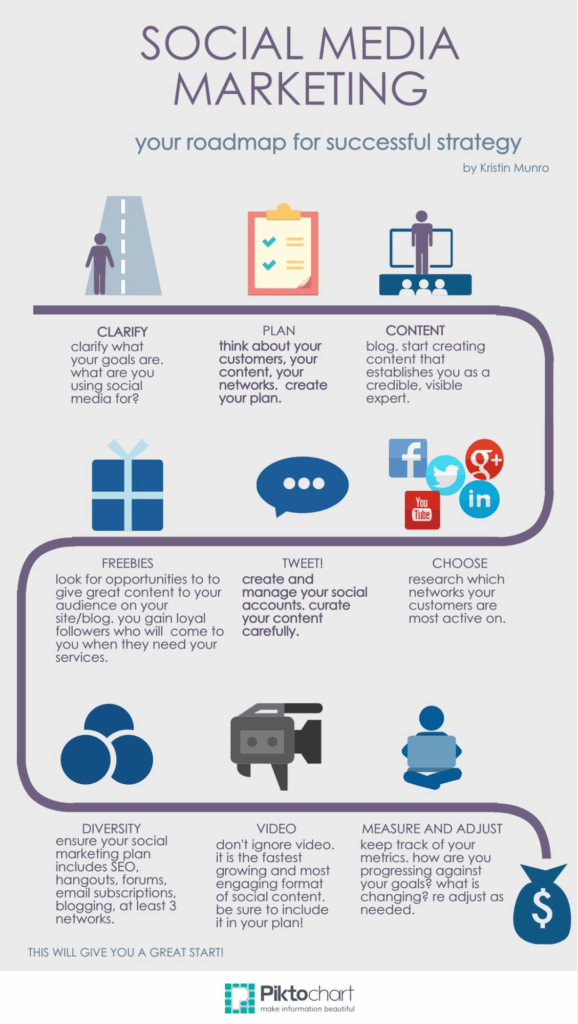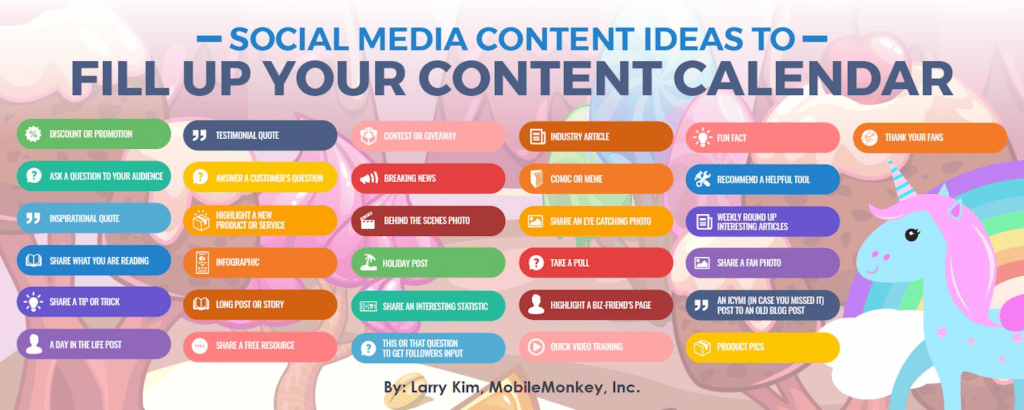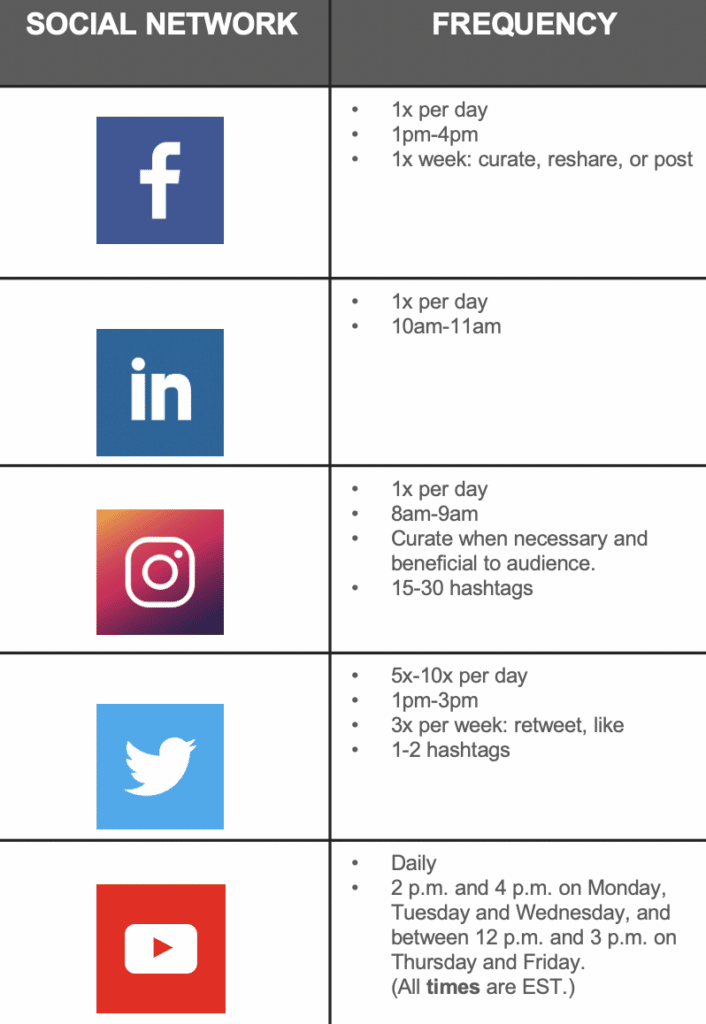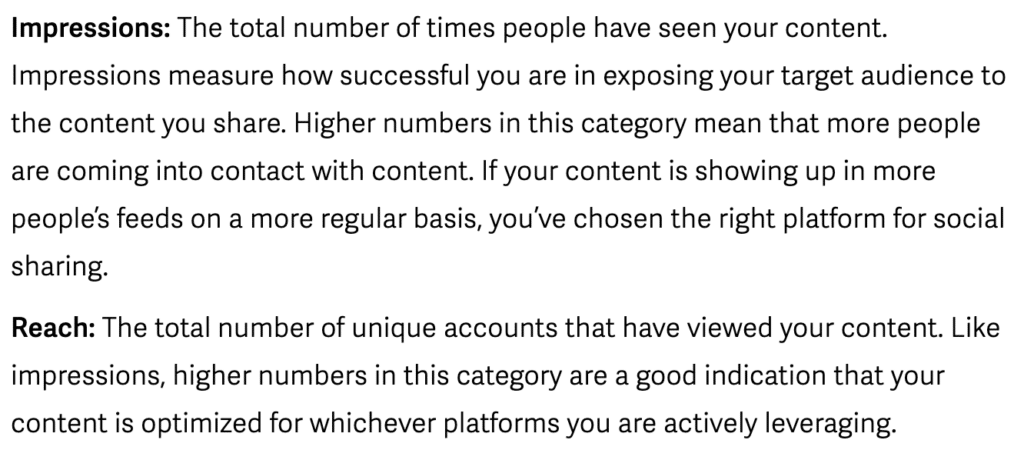When it comes to developing a successful social media marketing strategy, I like to approach it as I would an entire marketing strategy. To be more specific, you need to know exactly what you want to realistically achieve (with a timeframe attached), how success will be measured, and how it will impact your overall business objectives.
In this day and age, having a social media presence isn’t even something worth questioning. Instead, businesses — both small and large — are crafting specific ways to engage and connect their target audience on social media as a way to foster growth initiatives.
Here are a few social media marketing and selling stats to keep in mind as you keep reading:
- 71% of customers who have had a good social media service experience with a business/brand are likely to recommend it to others.
- 78% of salespeople engaged in social selling are outselling their peers who aren’t.
- 84% of C-Level executives use social media to make purchasing choices.
- 70% of business-to-consumer marketers have gotten their customers through Facebook.
- More than 50 million small businesses currently use Facebook Pages to connect with their customers.
- Customers report spending 20%–40% more money on brands that have interacted with them on social media.
Now that you have an idea of how effective social media marketing (and selling) is, here’s what you can expect to learn in today’s blog post:
- Key steps you’ll need to take to build a social media strategy that will grow revenue.
- Why you should tie in your social media efforts with content marketing.
- How to create meaningful connections with your target audience.
- Figuring out how often you should post content.
- Top KPIs you should be tracking to figure out what’s working and what isn’t.
Let’s get started…
What are you trying to achieve?
Start off by asking yourself how a solid social media strategy can play an integral role in helping you drive targeted traffic, leads, and sales to your website. The important part here is to make sure that you align social media goals with the overall business objectives. From there, you can lay out a specific and measurable game plan to hold yourself accountable.

Just as you would use SMART goals when it comes to the entire marketing plan, do the same with your social media strategy. Here’s an awesome example you can use by Hootsuite:
The S.M.A.R.T goal framework is all about creating relevant, achievable goals that help support your overall business objectives. The acronym stands for:
- Specific: Be clear. Does “increase engagement” mean you want 100 new followers or 1,000? Making your social media goals specific helps you track progress and measure success.
- Measurable: Every goal needs some kind of metric. “Improve customer service” is a great concept, but it’s not a goal unless you have a way to measure that improvement.
- Attainable: Your social media goals should absolutely require you to stretch, but they should be within reach if you put in the required work.
- Relevant: This is the piece that ties your goal-setting back to larger business objectives. If your goal involves increasing Facebook likes, for example, make sure you understand how that will benefit the business.
- Timely: Deadlines keep everyone accountable. Include a timeframe for completion of your goal so you know when to check in on your success. You might also want to include some milestones along the way for incremental check-ins.
Your roadmap should be clear and concise
Try not to overthink the process of developing a roadmap that can help guide you through the daily, weekly, and monthly implementations for your social media strategy. Make the roadmap as simple and easy-to-follow as possible.
For starters consider the following:
- Who are you trying to reach?
- Where does your target audience spend most of their time online and with which social networks?
- What type of content do they consume the most?
- How can you be a part of the conversations they are having online?
- How will you map out your social media content with your marketing funnel so that you know which updates are more for awareness, and which are more for lead generation or sales?
- Which tools will you use to help with monitoring your brand online?
- Which tools will you use to track and measure your success?

Social media and content go hand-in-hand
I know this is a no-brainer, but it’s true — tying your social media strategy in with your content initiatives will only help amplify your reach and positioning, while also providing you clearer insight on which content is performing better.
As you develop content assets — be it whitepapers, guides, checklists, videos, infographics, tutorials, and blog posts, you’ll be able to leverage social media as a vehicle to proliferate those assets. Doing so will allow you to do the following:
- Build awareness for your products/services and expertise
- Grow your audience and continue expanding
- Find and attract new customers
- Generate qualified leads that can be nurtured into customers

Finally, make sure that your social media content also matches up with the content you’re developing, especially if you have specific ‘content pillars’ you’re trying to target and publish. Here’s a great example by NewsCred:

“Establish content pillars to help you classify and group social content into clearly-defined categories, such as “product,” “service,” “events,” and “editorial.” Leave space for temporary categories like “seasonal campaign,” which could be associated with one-off events or campaigns.”
Decide how often you will post
Making sure that you update your social media profiles and stay on a consistent cadence is important. Some of my favorite hashtags to help you generate themes every single week are the following:
- #mondaymotivation
- #tuesdaytips
- #wednesdaywisdom
- #thursdaythoughts
- #fridayreads
- #saturdayhustle
- #startupsunday
Each of these provides you enough wiggle room to not be so specific, but broad enough to play around with the creativity of your content updates. Doing so is a great way to help you understand which topics and which types of content assets actually drive the desired results you’re looking for. From there, you can adjust as needed, adding in more relevant hashtags to help amplify your reach.
Next up, here are some quick tips you can follow when trying to decide how often you should post:

Don’t forget that there are tools to help you schedule out your social media posts. Instead of taking time to personally post to each social media platform every day, use a tool like Hubspot or SEMRush to plan out and automate your content for the week.
Know which KPIs matter most to your business
One of the tough things about narrowing down on KPIs to track is that you can really get down a rabbit hole of thinking nearly every single metric is just as important as the others. One of the ways to get around this is to always think about how your social media KPIs will help provide insight into how it’ll impact your business. Here’s another example:

Here’s a concise list of KPIs I would recommend:
- Impressions
- Reach

- Site traffic and from which social networks
- Engagement rate
- Top-performing evergreen content assets that are shared out on social media
- Conversions/actions taken — e.g. newsletter sign-up, trial sign-up, demo request, content download, etc.
- Revenue generated and attribution
Wrapping it up
Social media is only effective and impactful to your business and your potential/existing customers if you put in the efforts to continually test. Remember the key elements to keep top of mind are business objectives, your target audience, milestones you want to achieve along the way, a cadence for posting, and being clear on what you’ll measure to determine whether or not your social media strategy is successful.
Lastly, don’t be afraid to keep testing different content types. Gifs, short videos, memes, etc. all add personality to your business and brand, so be authentic with what you’re posting. Social media is a tool that should be used to converse with your target audience and add value, not just transactional — so have fun with it.






4 Responses